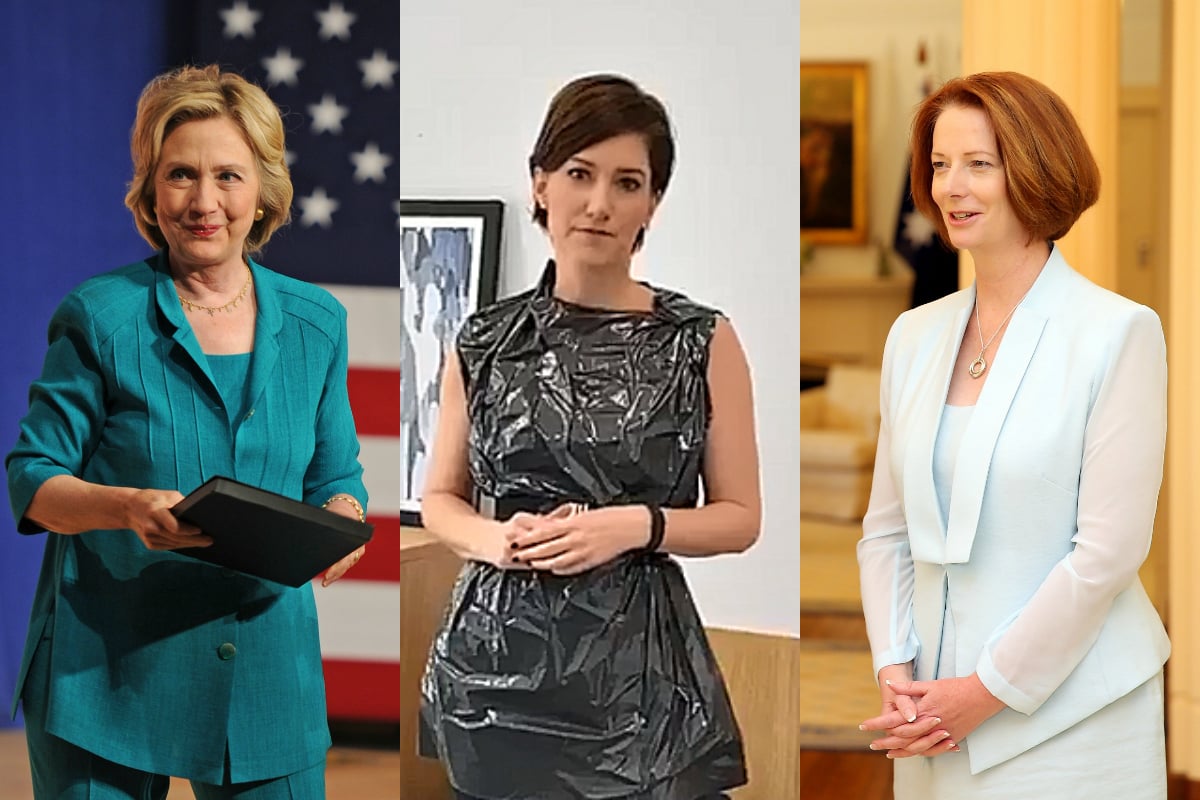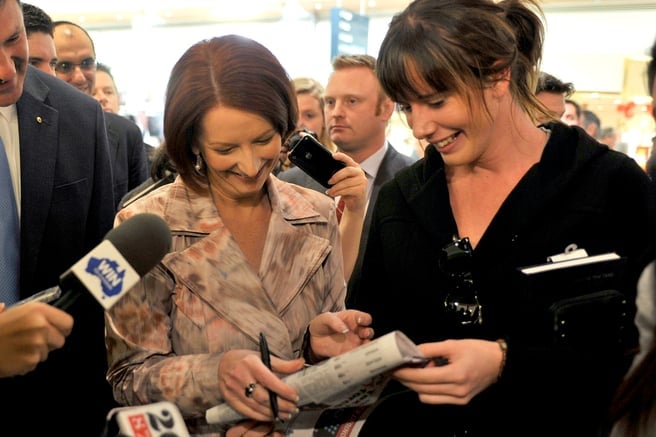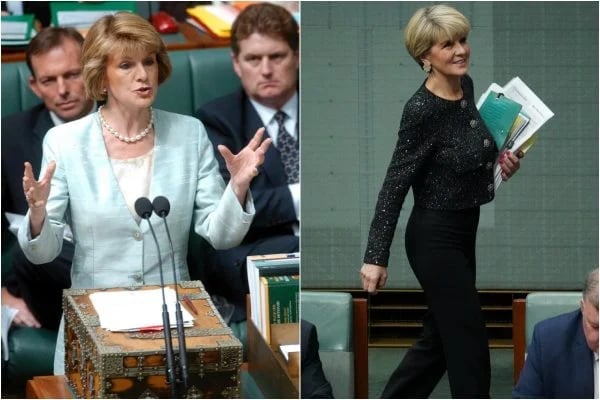
In a column in The Adelaide Advertiser over the weekend, journalist Peter Goers called for MPs to stop promoting themselves via taxpayer-funded electoral newsletters.
He chided South Australian state MP David Basham and federal member for Boothby, Nicolle Flint, for splashing the pages of theirs with hollow photo opportunities rather than discussion of important issues. (Hear, hear!)
But for reasons that remain unclear, Goers also reserved an entire paragraph for a dissection of Nicolle Flint's appearance.
Watch: "I missed the moment to take issue with it": What Julia Gillard would have done differently. Post conitnues after video.
"Nicolle wears pearl earrings and a pearly smile," he wrote. "She favours a vast wardrobe of blazers, coats and tight, black, ankle-freezing trousers and stiletto heels. She’s [sic] presents herself in her own newsletter, 23 times as a fashion plate. She has blazers and coats in black, blue, pink, red, beige, green, white, cream, floral and two in grey."
Basham, meanwhile, was described simply as "King of the open-necked shirt".



Top Comments